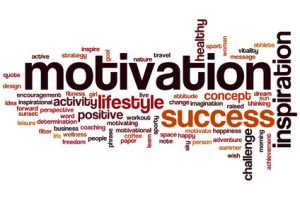A lot of experts recommend that having one or more mentors is an important aspect of developing your career. Being a mentor can be just as valuable. The problem with finding or being an effective mentor is that many people who are very accomplished in a particular area, may not have the skills to lead someone through the thinking that takes you from the problem to an insight to action and accountability – the keystones of breakthrough performance.
Years ago, I asked the finance manager where I worked if he would be willing to be my mentor. It was scary for me at the time. He was very smart, younger than I was by a decade, but higher up in management, and he knew finance like nobody else I had ever worked with. He was very abrupt, but I thought if he was being my mentor, he might soften his approach and it could improve our working relationship.
Math had always been a weakness for me and budgets and financial reports – full of numbers – seemed so daunting. The first couple of times I brought him an issue I was struggling with, he immediately showed me where the answer to my question could be found, or where the error was. It helped in the short-run, but I didn’t learn from the experience so I could do it myself the next time. If I asked clarifying questions, he would roll his eyes and tell me to just do it the way he said to do it. Eventually, I stopped asking for his guidance. It was a mentoring match that simply didn’t work.
Practical mentoring skills can be learned and ultimately, mastery will make mentors better managers and leaders, while preparing mentees and proteges for the future.
The key things a professional mentor needs to be able to do are:
1. Develop a rapport with the protege/mentee to build trust and make it safe for open and constructive communication. Start by asking for and receiving your mentoring partner’s permission to delve into the problem.
2. Observe patterns in behavior and your mentoring partner’s ability to produce results – this allows the mentor to see what the protege or mentee cannot see from their point of view.
3. Listen to the core of the problem as identified by the protege/mentee – there is valuable insight in their take on what is happening or not happening.
4. Ask reflective questions that lead the protege/mentee through a problem-solving process that has them do all of the heavy thinking. Examples of reflective questions are:
What was the result you were trying to produce?
What actions did you take to get there?
How close to your goal did you get?
What do you think worked about what you did?
If you had to do this sales call, presentation, etc. again, what would you do differently?
In thinking through and answering these kinds of questions, the mentee has the best opportunity of getting to an “aha” moment. When he/she discovers their own answers, they can truly own the solutions.
5. Create a Specific, Measurable, Achievable Result in Time – SMART and a feedback method that works for both of you. This is what allows the mentor the opportunity to be supportive and encourage the mentee as he or she practices new behaviors, techniques and ways of being.
This method initially takes more time than showing someone how to do it, telling them what to do, or giving “constructive criticism.” It allows a person to think through a problem and to learn from their experience, whether they succeed or fail. The more you do it, the more trust there is in the relationship between mentor and protege, the faster the questioning and thinking process becomes.
During college, I had a faculty adviser who became one of the most effective mentors to ever work with me. Sometimes, even now I ask myself the kind of question she would ask and it gets me going in the right direction. Like the time I had writer’s block and the deadline was nearing. I was writing a biographical account for an article and it just wasn’t coming together. I remember telling her how hard it was to write about this topic in the first person. She said, “What if you wrote as if it was about someone else?”
I had my “aha” moment right then and there. I said, “I can do that,” and went on to complete the article that evening. It was one of my best.
These kinds of conversations don’t come naturally to most people. In our training programs, we give mentoring partners the underpinnings for these conversations, opportunities to try them in a safe environment and to see how they work. As effective as these conversations are in a mentoring partnership, they are also very useful in management, supervision and even parenting.


